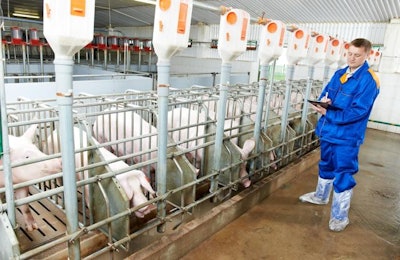
There are multiple reasons the animal agriculture industry faces a shortage of veterinarians, but one of the most disturbing ones for Dr. Christine Navarre, professor at the Louisiana State University (LSU) School of Animal Sciences, is a lack of instructional resources at veterinary colleges.
Navarre, who is also an extension veterinarian with the LSU AgCenter, discussed the dearth of agricultural veterinarians during the webinar, “Challenges to Recruit/Retain Food Animal Veterinarians and Impacts on the Food Supply,” held on April 7. The webinar was hosted by The Council for Agricultural Science and Technology (CAST).
One thing addressed during the webinar was that while many veterinary students go into the field is to become veterinarians for companion animals, and a lot of emphasis is placed there. But a lack of emphasis on food animals and a lack of resources to instruct students on the care of food animals is also a growing problem, said Navarre.
“One of the things that is very concerning to me, because I’m very close to it, is the erosion of food animal education at veterinary colleges,” she said. “It’s very troublesome. My colleagues that are teaching at the veterinary schools, there’s not enough of them to do all the things that they need to do.”
And when professors are overburdened, “it impacts attraction and maintenance of students. It’s very difficult to remain upbeat when you’re exhausted,” she said.
Diversification vs. specialization
Some sectors of animal agriculture are more challenged by a veterinary shortage than others. While many farmers are involved in multiple species of food animals, that isn’t necessarily the case with veterinarians.
“It’s so difficult these days to be a cattle veterinarian and even being a beef veterinarian and dairy veterinarian. It’s very difficult to be both, much less know something about swine and poultry and small ruminants and aquaculture, and all the things that need to be taken care of.
The topic of post-veterinary school training to help veterinarians be more diversified was discussed, and Navarre said that would be beneficial, particularly in times of a major animal disease outbreak.
However, that sounds easier than it really is. When asked if the training could be offered to companion animal veterinarians, she said that it could, but the willingness of the practitioners could play a factor. For example, someone from a dog and cat practice may not want to do medical procedures on bulls, she said.
















